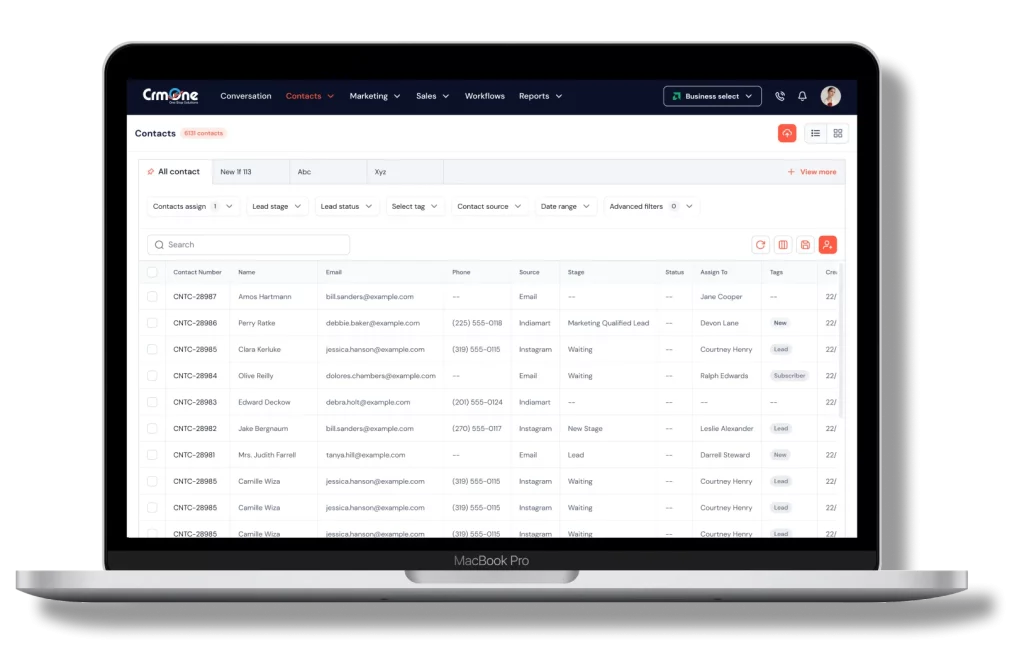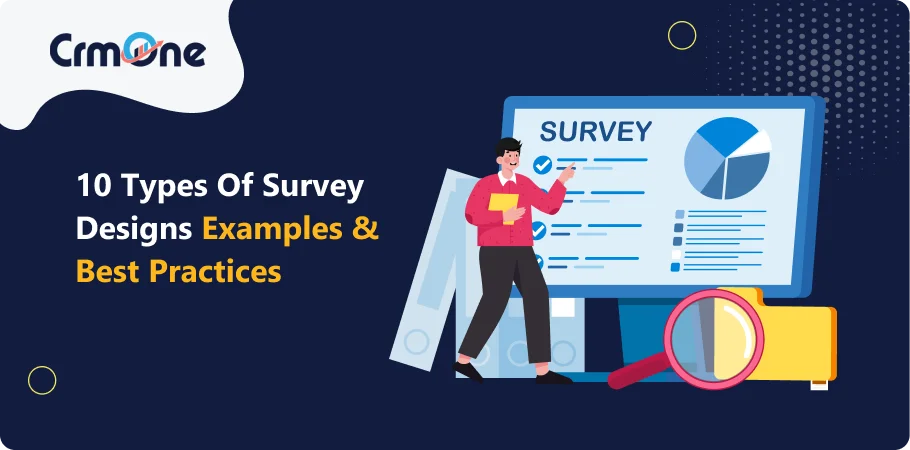In the realm of survey research, understanding the various methodologies and structures of surveys is crucial. With numerous types of survey designs available, each with its unique strengths and weaknesses, it’s paramount to comprehend the intricacies of each approach. Whether you’re a student delving into the world of survey research or a seasoned professional looking to refine your methods, this comprehensive guide will explore 10 types of survey designs, providing examples and best practices along the way.
From traditional face-to-face interviews to modern online surveys, each method offers distinct advantages in collecting data for your research. By mastering these survey research methods, you’ll gain valuable insights into your target audience, enabling you to make informed decisions based on reliable data.
Optimal Approaches for Conducting Survey Research

Regardless of the survey design you choose, adhering to best practices is essential to ensure the validity and reliability of your findings. Here are some tips to enhance the quality of your survey research:
Define Your Research Objectives: Clearly articulate the goals and objectives of your study to guide the survey design process effectively.
Select the Right Survey Method: Choose a survey method that aligns with your research questions and objectives, taking into account factors such as sample size, timeframe, and data collection methods.
Design Clear and Concise Questions: Craft survey questions that are unambiguous, relevant, and easy to understand to minimize respondent confusion and improve data quality.
Pretest Your Survey Instrument: Conduct a pilot test of your survey with a small group of participants to identify any potential issues or ambiguities before launching it to a larger audience.
Ensure Ethical Compliance: Obtain informed consent from participants, protect their privacy and confidentiality, and adhere to ethical guidelines throughout the research process.
Maximize Response Rates: Implement strategies to increase response rates, such as offering incentives, sending reminders, and optimizing survey distribution channels.
Analyze Data Thoroughly: Use appropriate statistical techniques to analyze survey data and draw meaningful conclusions that address your research objectives.
Communicate Findings Effectively: Present your survey results in a clear, concise manner, using visual aids and narrative summaries to facilitate interpretation and dissemination.
By following these best practices and choosing the right survey method for your research objectives, you can conduct high-quality survey research that yields valuable insights into your target population or phenomenon of interest. These approaches ensure that the collect data gathered is representative and collected efficiently, especially in the context of online surveys, while maintaining ethical standards throughout the research process.
Types Of Survey Design:
1. Cross-Sectional Surveys
Cross-sectional studies gather data from a diverse group of participants at a single point in time. This type of survey design is ideal for capturing a snapshot of a particular topic across different demographics. Cross-sectional surveys can be conducted through various means such as in-person surveys, phone surveys, SMS surveys, or even kiosk surveys.
Example:
A market research firm conducts a cross-sectional survey to assess consumer attitudes towards a new line of eco-friendly household products. The survey designers deploy the survey through multiple channels, including in-person interviews, phone calls, and online platforms.
By gathering data from a diverse sample of respondents across different age groups, income levels, and geographic regions, the firm aims to obtain a comprehensive snapshot of consumer preferences at a specific moment in time.
Best Practice:
To mitigate survey bias, ensure the sample is representative of the target population by employing random sampling techniques. Additionally, use a combination of demographic and psychographic questions to capture a comprehensive snapshot of the respondents’ attitudes and behaviors towards the topic of interest. This approach helps to minimize biases and ensures the validity and reliability of the survey findings.
2. Longitudinal Surveys
Contrary to cross-sectional surveys, longitudinal studies track the same group of participants over an extended period. By collecting data at multiple time points, researchers can observe trends and changes over time.
Example:
A university tracks the academic performance, career paths, and life satisfaction of a cohort of students from their first year through graduation and beyond. The longitudinal survey collect data at multiple intervals to observe changes over time.
Best Practice:
Maintain a high retention rate of participants throughout the study duration. Adjust survey questions as needed to capture evolving areas of interest while maintaining consistency for longitudinal analysis. This ensures the collection of comprehensive survey data from the targetaudience over time, facilitating the conduct of surveys online and maintaining a representativesample for accurate analysis in longitudinal survey research methods.
3. Exploratory Surveys
Exploratory surveys are conducted to gain insights into a research topic where little is known or understood. These surveys often utilize open-ended questions to allow survey participants to express their thoughts freely. For instance, an exploratory survey might explore public perceptions of renewable energy sources in a particular region.
Example:
A non-profit organization conducts an exploratory survey to understand the barriers and motivations for volunteering in the local community. The survey uses open-ended questions to allow respondents to share their perspectives freely.
Best Practice:
Avoid leading questions and maintain an open-minded approach to uncover unexpected insights. Analyze the qualitative data using thematic analysis to identify patterns and inform future research. This approach enhances the survey research online process by enabling conduct surveys through online survey while collecting quantitative data to complement qualitative insights gained from open-ended questions.
4. Descriptive Surveys
Descriptive surveys aim to describe the characteristics of a population or phenomenon. They are often used to answer “what” questions and provide a comprehensive overview of a particular topic. A descriptive survey could investigate the purchasing behaviors of consumers in the healthcare industry.
Example:
A government agency administers a descriptive survey to understand the demographic characteristics, living conditions, and healthcare needs of the elderly population in a specific region.
Best Practice:
Ensure the survey covers all relevant aspects of the target population to provide a comprehensive overview. Use a combination of closed-ended and open-ended questions to capture both quantitativeand qualitative data. This could be facilitated through various survey methods including computer-assisted telephone interviewing, in-person surveys, or phone surveys depending on the surveypeople preferences. Healthcare organizations may leverage these surveys for gathering information about target market trends.
Additionally, monitoring the response rate is crucial to ensure the survey’srepresentativeness of the larger population. The survey should be designed to reach the same people across different time points for consistency in in-person or cross-sectional study approaches, while avoiding technical jargon to facilitate respondent’s answer accuracy.
5. Causal Surveys
Causal surveys seek to establish a cause-and-effect relationship between variables. Through careful design and analysis, researchers can determine whether changes in one variable lead to changes in another.
Example:
A marketing department conducts a causal survey to investigate the impact of a new advertising campaign on brand awareness and purchase intent among their target audience.
Best Practice:
Carefully design the survey to isolate the causal relationship between variables. Consider using control groups and randomization to enhance the validity of the findings. This approach aligns with conducting research in research methods, distinct from exploratory research and descriptiveresearch, to delve into causal relationships between variables and provide actionable insights for decision-making in marketing and other fields.
6. Qualitative Surveys
Qualitative surveys focus on gathering non-numerical data, such as opinions, beliefs, and experiences. These surveys often employ methods like focus groups or open-ended questions to delve into the nuances of a subject. They are valuable for exploring complex social phenomena or understanding subjective experiences.
Example:
A user experience research team conducts in-depth interviews and focus groups to explore the pain points and preferences of customers using a new mobile application.
Best Practice:
Employ skilled moderators to facilitate open-ended discussions and probe for deeper insights. Analyze the qualitative data using techniques like thematic analysis or grounded theory.
7. Quantitative Surveys
Quantitative surveys, on the other hand, emphasize numerical data and statistical analysis. These surveys use closed-ended questions with predetermined response options to quantify attitudes, behaviors, or preferences. Quantitative surveys are useful for obtaining precise measurements and analyzing large datasets efficiently.
Example:
A market research firm administers a quantitative survey to measure customer satisfaction with a retail brand’s products and services. The survey uses a combination of Likert-scale and multiple-choice questions.
Best Practice:
Ensure the survey questions are clear, unambiguous, and aligned with the research objectives. Use statistical analysis techniques to identify patterns, trends, and correlations within the numerical data.
8. Mail Surveys
Mail surveys involve sending questionnaires via postal mail to potential respondents. While they offer a cost-effective way to reach a wide audience, they may suffer from low response rates and longer turnaround times. Nevertheless, mail surveys can be effective for gathering data from geographically dispersed populations.
Example:
A non-profit organization sends a mail survey to a random sample of households to gather feedback on community development initiatives.
Best Practice:
Provide clear instructions, offer incentives, and include prepaid return envelopes to improve response rates. Follow up with reminders to maximize participation.
9. Online Surveys
In today’s digital age, online surveys have become increasingly popular due to their convenience and accessibility. By leveraging web-based platforms, researchers can reach a broad audience quickly and efficiently. Online surveys are well-suited for collecting data from tech-savvy demographics and conducting large-scale studies.
Example:
A university conducts an online survey to understand the learning preferences and technology usage of its student population.
Best Practice:
Optimize the survey for mobile devices, ensure data security, and leverage features like skip logic and branching to enhance the respondent experience.
10. Telephone Surveys
Telephone surveys involve conducting interviews with respondents over the phone. While they offer a more personal touch compared to online surveys, they may be hindered by declining response rates and the prevalence of mobile devices. However, telephone surveys remain a viable option for reaching populations without internet access.
Example:
A political campaign conducts a telephone survey to gauge voter sentiment and voting intentions in a specific district.
Best Practice:
Train interviewers to be courteous, engaging, and adept at handling objections. Ensure the survey duration is reasonable to maintain respondent attention and cooperation.
Book a CrmOne Demo
Experience the CrmOne simplicity and power. Our experts will show you the best ways to use it and answer your questions in real time. See how CRMOne fits your needs.

Advantages of Survey Designs
- Cross-Sectional Studies: Provide a broad snapshot of a population at a specific point in time.
- Longitudinal Studies: Allow researchers to observe changes, trends, and developments over time within the same group.
- Exploratory Research: Helps gain a deeper understanding of a topic and identify potential variables for further investigation.
- Descriptive Research: Offers a comprehensive overview of the characteristics and prevalence within a target population.
- Causal Studies: Establish cause-and-effect relationships between variables through manipulation and observation.
- Online Surveys: Convenient, cost-effective, and can reach a diverse, geographically dispersed sample.
- Telephone Surveys: Offer personal interaction and real-time feedback, though may have lower response rates.
- Face-to-Face Surveys: Allow for in-depth probing, clarification, and building rapport with respondents.
- Mail Surveys: Can be effective for longitudinal studies and reaching certain demographics, though may have lower response rates.
- Mobile Device Surveys: Provide flexibility, accessibility, and interactivity for engaging participants on the go.
Disadvantages of Survey Designs
- Self-Reported Data: Can be affected by various biases, such as social desirability, recall, or response styles.
- Low Response Rates: Can reduce the representativeness and reliability of the sample.
- Measurement Errors: Ambiguous, leading, or confusing questions, or inadequate response options.
- Limited Depth: May not capture the nuances, motivations, or contexts of respondents’ answers.
- Sampling Bias: Certain populations may be underrepresented or excluded, affecting the generalizability of results.
- Cooperation Problems: Respondents may be unwilling to provide truthful or complete information.
- Lack of Interviewer: In self-administered surveys, respondents cannot be probed for additional information.
- Technical Limitations: Online and mobile surveys may be limited by respondents’ access to technology or digital literacy.
- Cost Considerations: Face-to-face and mail surveys can be more expensive to administer compared to online or telephone methods.
- Time Constraints: Telephone surveys may have limited time for open-ended questions due to respondent attention span.
How to analyze data collected from multiple choice survey questions

Analyze closed-ended multiple choice questions using quantitative methods1:
- Count the number of responses for each answer option and calculate the percentage of respondents who selected each option.
- Create comparison charts, bar graphs, or pie charts to visualize the response distribution1.
- Perform cross-tabulation to analyze how responses vary across different demographic segments of respondents1.
Analyze open-ended multiple choice questions using qualitative methods1:
- Identify common themes and trends in the written responses.
- Organize responses into groups and categories to uncover patterns.
- Use text analysis techniques to quantify qualitative data, if needed.
Analyze scale-based multiple choice questions using measures of central tendency1:
- Calculate the mode, mean, and median to understand the overall sentiment or strength of opinion.
- Visualize the response distribution using bar charts or histograms.
Analyze “select all that apply” multiple choice questions carefully23:
- Restructure the data to treat each option as a separate binary variable (yes/no).
- Examine the frequency of each option being selected, as well as common combinations of selected options.
- Be aware of potential issues, such as not being able to distinguish between respondents who don’t own any devices vs. those who skipped the question.
Ensure the multiple choice question design is optimized for the survey goals and respondent experience:
- Use single-answer questions for binary, rating, or nominal scale data.
- Use multiple-answer questions when you want to capture all the options that apply.
- Consider mobile optimization and providing clear, comprehensive answer choices to avoid bias4.
Survey Methodologies: Choosing the Right Approach

In the vast landscape of survey research, selecting the most suitable methodology is paramount to the success of any study. Understanding the nuances of different survey methodologies empowers researchers to make informed decisions that align with their research objectives and target audience.
One common approach is the cross-sectional survey, which provides a snapshot of data at a single point in time. This method is useful for capturing information about a population’s characteristics or opinions at a specific moment.
On the other hand, longitudinal surveys track changes in variables over time by repeatedly surveying the same group of participants. This approach offers insights into trends and patterns, allowing researchers to observe how phenomena evolve over extended periods.
Additionally, experimental surveys involve manipulating one or more variables to assess their impact on outcomes. By comparing experimental and control groups, researchers can establish causal relationships between variables.
Another valuable methodology is the qualitative survey, which focuses on exploring participants’ experiences, attitudes, and perceptions in depth. Open-ended questions are often used to elicit rich, detailed responses that provide deeper insights into complex phenomena.
Furthermore, online surveys have gained popularity due to their cost-effectiveness and accessibility. Conducted via web-based platforms, online surveys allow researchers to reach a wide audience quickly and efficiently.
Ultimately, the choice of survey methodology depends on various factors, including the research questions, sample size, budget, and available resources. By carefully evaluating these factors and understanding the strengths and limitations of each approach, researchers can select the most appropriate methodology to meet their research objectives and produce reliable, actionable insights.
Conclusion
Survey research encompasses a diverse array of methodologies and approaches, each with its unique strengths and applications. Whether you’re conducting cross-sectional studies, longitudinal surveys, exploratory research, or any other type of survey design, understanding the principles and best practices of survey research is essential for generating reliable and actionable data. Utilizing tools like CrmOne can enhance your ability to manage and analyze survey data effectively, providing deeper insights into your research outcomes. By leveraging the right survey methods and techniques, you can collect valuable insights that inform decision-making, drive innovation, and advance knowledge in your field.
So, whether you’re a student embarking on a research project or a seasoned researcher seeking to refine your survey methods, remember that the key to successful survey research lies in thoughtful design, meticulous execution, and rigorous analysis. With the support of comprehensive CRM tools such as CrmOne, you can streamline your research processes and enhance the overall quality of your findings.
Get started for Free
Start for free today. Boost your sales by clicking the Get Started button. With CrmOne, you can manage leads, sales, and customer service all in one place.

